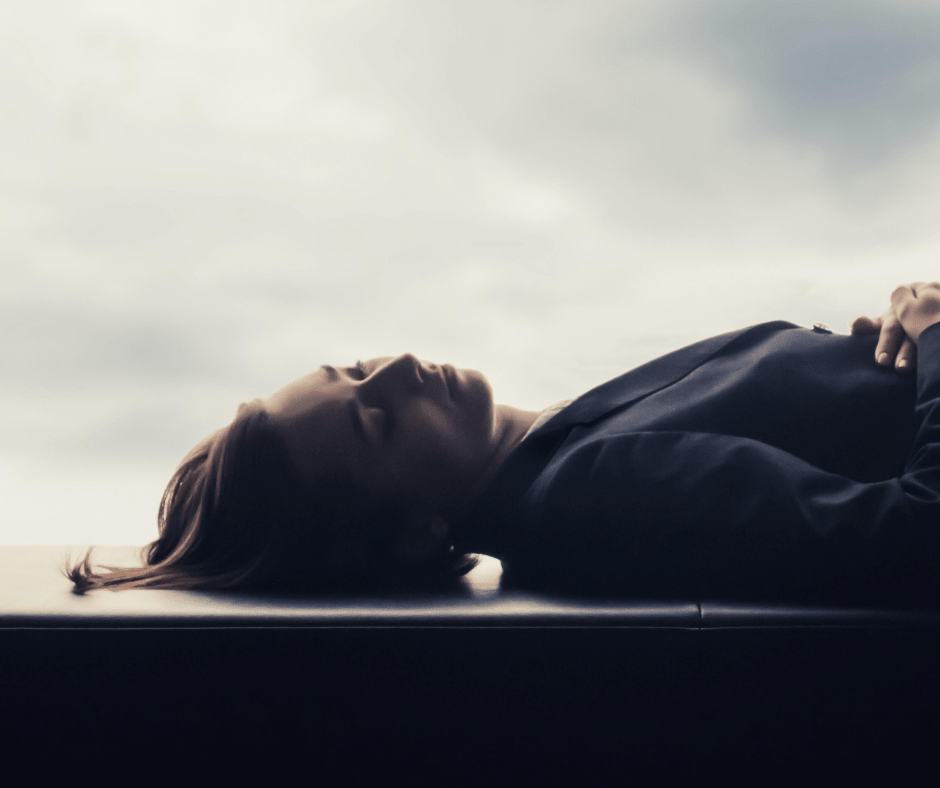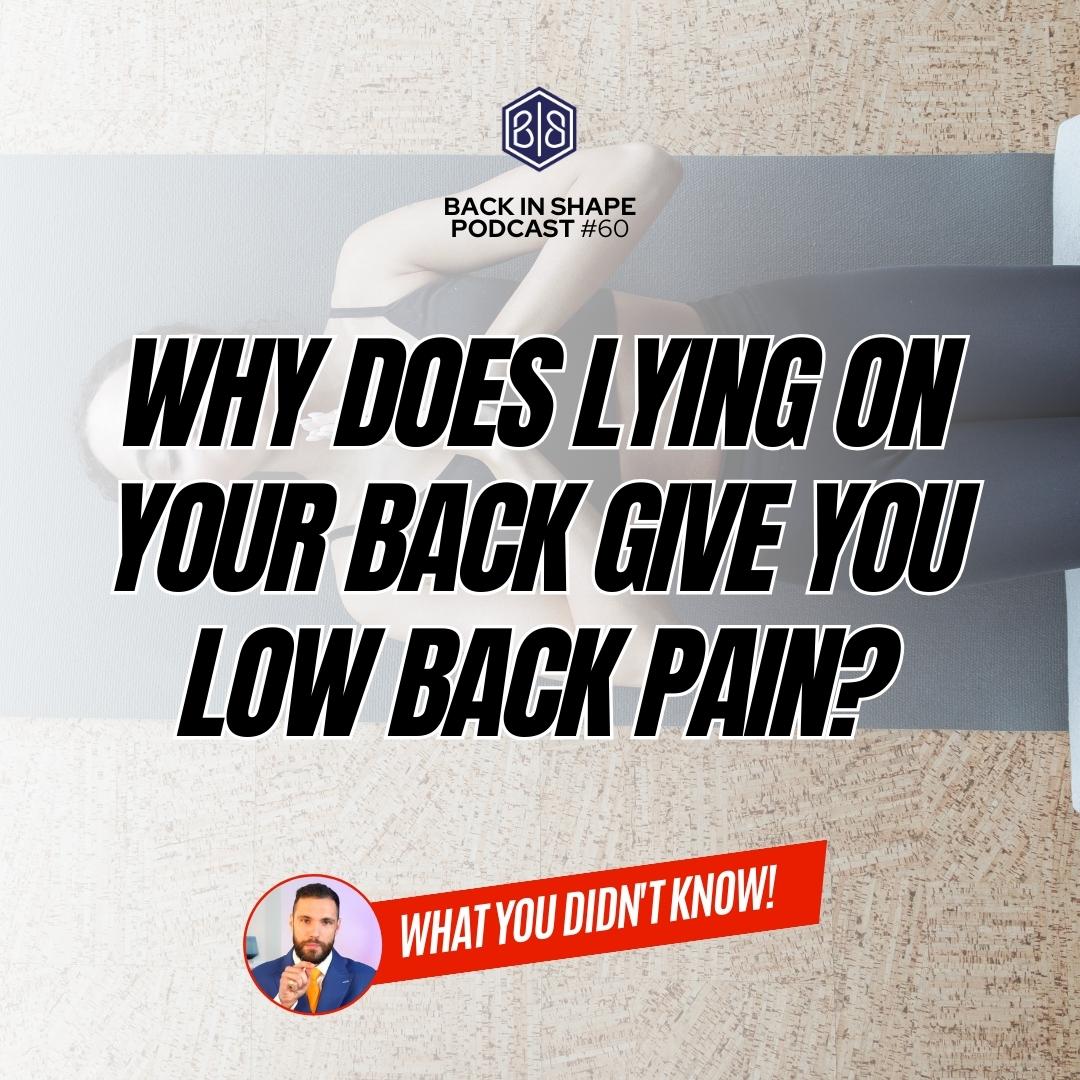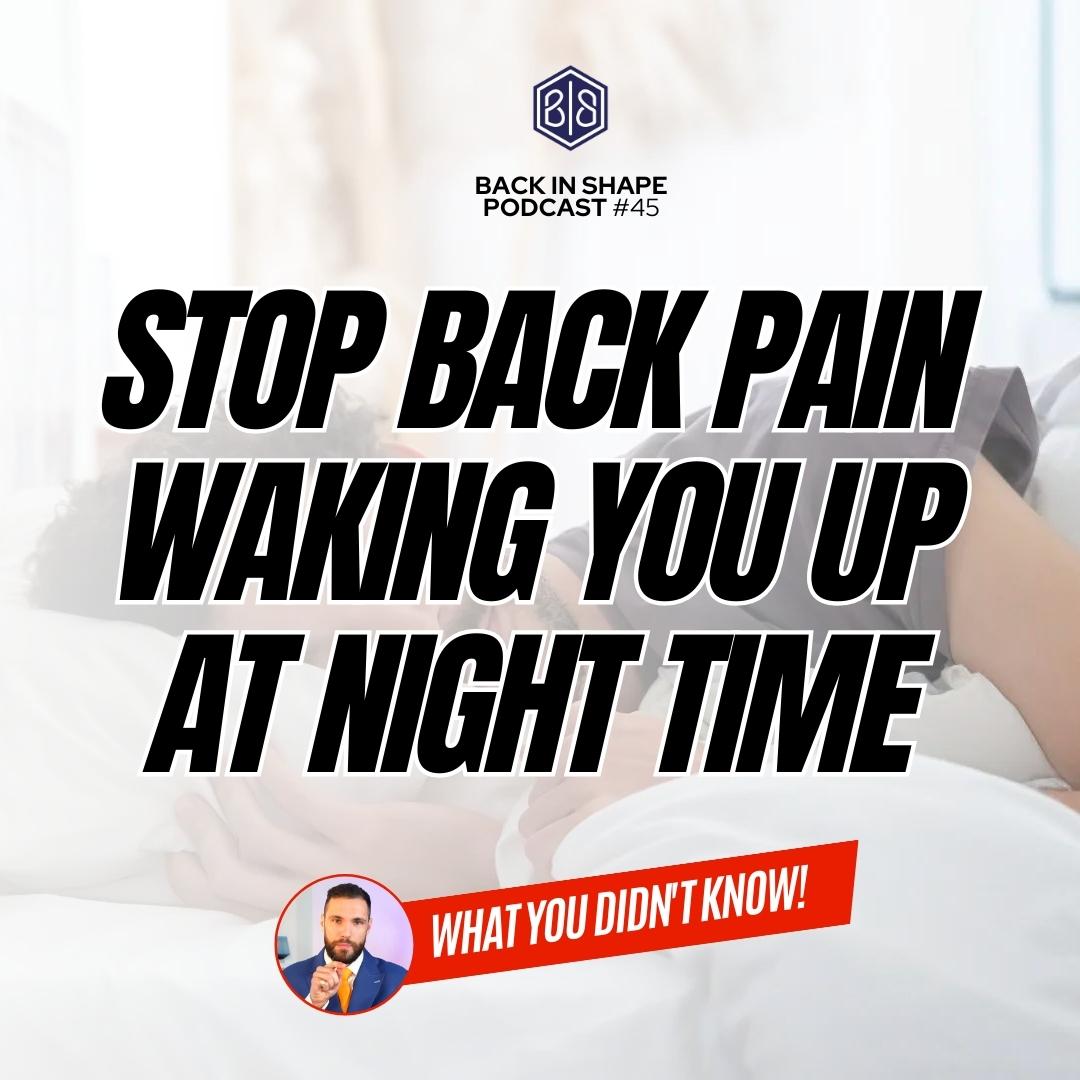There are many positions that you can adopt during the day that might exacerbate any back pain that you already have, or bring on pain or aching that you don’t necessarily notice bothers you during the day. It’s quite common to experience pain in the back when lying down, especially if your spine is positioned in a certain way. This is usually caused by the change in position of your spine that occurs when you lie down flat on your back, and as a result you probably won’t normally notice any pain if you’re lying on your side when you’re relaxing in the evening or lying down to sleep.
In this articles we’ll talk about why this happens and what can cause the pain in your back when lying down on your back. We’ll also show you a really good exercise to help decompress your lower back safely when you’re lying on the floor! Plus, at the end of this page, you can also learn more about more detailed support in fixing an injured lower back for good.
Note: You can watch & read the updated detailed version of this here.
The Two Main Reasons for Back Discomfort
There are two main reasons why your back could normally hurt when lying down. Either you may notice a dull aching feeling in your spine, or a sharp pain in the lower back. The first of these reasons usually occurs if you’re generally not an active person or not based in a desk job where you may experience tighter hip flexors than that of someone who doesn’t spend a large portion of the day sat in a desk chair. If you are experiencing a dull aching feeling, it would be most likely down to your back dropping into flexion, meaning that the lower back becomes more rounded inwards than it’s used to being during the day. When this happens, the curve in your lower back drops and applies pressure onto the discs in the spine and puts more pressure on your lower back than it’s perhaps used to. In order to avoid feeling this type of pain when lying on your back, you may find that there needs to be more support in your lower back. The same type of feeling can often affect the neck, as they have a similar natural curve. Likewise in this situation where you may find opting for an orthopaedic pillow may help to provide the support you may need in the neck, you may just need some extra support in the lower back to help ease the pain. The discs in your spine need to be in a neutral and relaxed position, rather than compressed. There are specific exercises you can do at home to help alleviate the pressure in the discs of your lower back and you can learn more about those further down on this page.
Sharp Pain in the Lower Back
If you’re experiencing a more sharp pain in the lower back when you lie down, this can quite often occur when you have hyperextension in the lower back or an anterior pelvic tilt. In simple terms, a hyperextension in the lower back is where you have more curve in the lower back than is ideal – if you have this you may feel like you have a deeper curve in the lower back where your stomach is pushed slightly more forward. An anterior pelvic tilt may also cause hyperextension in the lower back to become more apparent, but with this kind of posture your pelvis will be tilted, angling more forward, meaning your bottom may appear more pronounced at the back. These two types of postural positions usually occur from having very tight hip-flexors from any hobbies you may have, or if you’re based in a desk job where having tight hip-flexors can naturally occur when you spend lengthy periods of the day sat down. If you have this type of posture, when you lie down your back is pulled into extension, so it’s forced into a flatter position. This will give you that sharp pain at the bottom of the lumbar spine as the joints are effectively being more squashed, and pushed into one another.
Returning your spine to a neutral position, correctly supported can really help you lying on your back without pain and is an excellent exercise you can do at home with just a towel, there’s a video further down on this page which will explain how to do this.
Back Pain while Sleeping
Experiencing pain in the back while sleeping can be distracting at times and can make it difficult for you to either fall asleep, or remain asleep. For that reason, it’s important to find a position that not only supports your spine where you need it, while at the same time maintaining good posture. If you notice the pain is stopping you from sleeping at times, or you’re experiencing pain at other times of the day – perhaps at work – you may benefit from having some degree of spinal analysis done by a professional, as they can often give you a good insight into the position and measurements of your spine.
At The Mayfair Clinic, our specialist range of orthopaedic tests and ability to measure the angles of the curves in your spine, means that we’re able to provide constructive advice on how to rehabilitate your spine so you’re not experiencing pain during the day, as well as during the evening when taking the time to relax and winding down to sleep. If your posture has been neglected over time, providing the right treatment in the necessary places can help to give you immediate relief, while a rehabilitation programme can help to strengthen your spine in the long-term.
In many cases beginning a strengthening and rehabilitation process can be really helpful, but the challenge is to know what is the right sort of exercises you should be doing for back pain. To help you with this we created our Back In Shape Protocols that are specifically created by our specialists to help you understand your back, and also give you the step-by-step rehabilitation necessary to help you relieve back pain. Beyond this the additional protocols are designed to then start to gently strengthen your spine effectively over the medium to long term.
You can learn more and join today for free by clicking the Learn More button on this page.

Back Pain Relief Protocol
Join our membership site & get the help and support you need to get rid of back pain for good. With support, videos and content to support your rehab from home the Back In Shape Membership can help you
How to relieve your lower back pain when lying on your back (easy back pain relief exercise)
Ultimately you need a safe and effective way to relieve the pressure on injured parts of your lower back, which is why it hurts your back when you’re lying down. We recommend the lumbar decompression exercise below because it helps move your spine back to a supported neutral position. You need to do it correctly, and if you do it will really help your lower back pain. This exercise makes up an important part of the Back In Shape program that we mentioned above so if you’d like more help, remember you can join the Back In Shape program and start fixing your back pain from home for free, Now, onto the exercise:
Relieving back pain when lying on your back:
This towel exercise, what we call the lumbar decompression exercise is by far the best way to help an injured lower back. The pain you’re experiencing in the lower back is becuase there is an injury down there of some scale. By positioning the spine in a safe neutral position, you’ve able to unload the joints, discs and muscles & ligaments to really take pressure off your lower back. DO NOT BEND FORWARD or round your back after you finish. Watch the video, and if you need more help the Back In Shape program is the prefect place to start.
Join Our Growing Community!
People are fixing their back pain from home and now it couldn’t be easier for you to join us too. Click the button below and join the Back In Shape Program for Free and start feeling better today.

